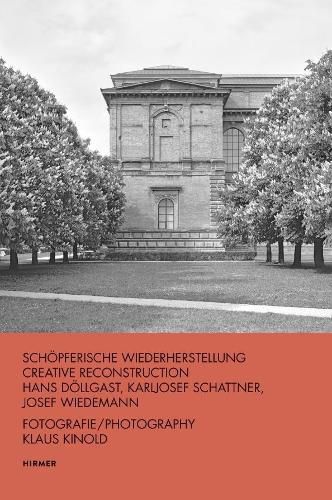Readings Newsletter
Become a Readings Member to make your shopping experience even easier.
Sign in or sign up for free!
You’re not far away from qualifying for FREE standard shipping within Australia
You’ve qualified for FREE standard shipping within Australia
The cart is loading…






The creative reconstruction of damaged buildings was an important topic in architecture after the Second World War, particularly in Bavaria. The Munich architect Hans Doellgast (1891-1974) was one of the pioneers of this development. His most important achievements include the repairs to the Alte Pinakothek, the Basilica of St. Bonifaz and the main municipal cemeteries.
Hans Doellgast was succeeded above all by two of his students, whose work can be seen as exemplary. Karljosef Schattner (1924-2012), for many years the diocesan architect of the Bishopric of Eichstatt, saved threate-ned build ings in the episcopal city such as the Old Orphanage by adding a contemporary extension, or gave a new lease of life to historic buildings such as the Ulmer Hof by means of functional additions. In the case of Hirschberg Palace he boldly placed a modern wing in front of the south facade. Josef Wiedemann (1910-2001) was an outstanding architect of the reconstruction of Munich. The interpretative reconstruction of the badly damaged Glyptothek on Koenigsplatz is regarded as one of his masterpieces.
$9.00 standard shipping within Australia
FREE standard shipping within Australia for orders over $100.00
Express & International shipping calculated at checkout
The creative reconstruction of damaged buildings was an important topic in architecture after the Second World War, particularly in Bavaria. The Munich architect Hans Doellgast (1891-1974) was one of the pioneers of this development. His most important achievements include the repairs to the Alte Pinakothek, the Basilica of St. Bonifaz and the main municipal cemeteries.
Hans Doellgast was succeeded above all by two of his students, whose work can be seen as exemplary. Karljosef Schattner (1924-2012), for many years the diocesan architect of the Bishopric of Eichstatt, saved threate-ned build ings in the episcopal city such as the Old Orphanage by adding a contemporary extension, or gave a new lease of life to historic buildings such as the Ulmer Hof by means of functional additions. In the case of Hirschberg Palace he boldly placed a modern wing in front of the south facade. Josef Wiedemann (1910-2001) was an outstanding architect of the reconstruction of Munich. The interpretative reconstruction of the badly damaged Glyptothek on Koenigsplatz is regarded as one of his masterpieces.